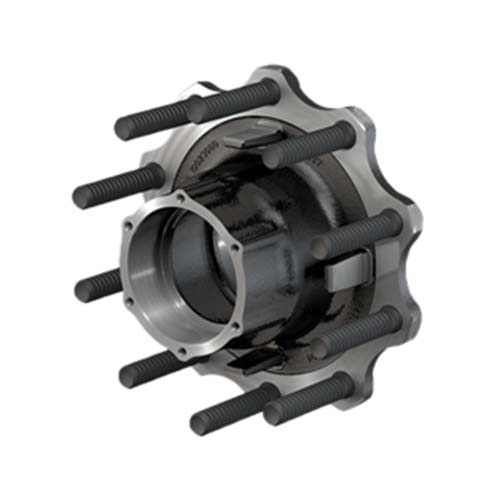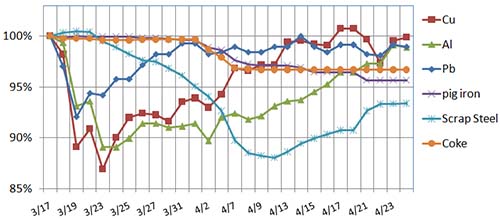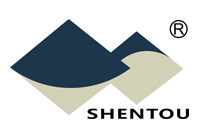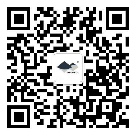CHINA AUTOMOTIVE SUPPLIER QUALITY MANAGEMENT BRIEFING
04/07/2020
Vol. 4, No. 4, April 2020

① QUALITY CHALLENGES & SOLUTIONS WITH YOUR SUPPLIERS IN CHINA
How to avoid or reduce quality risks with the purchasing
of lower-priced auto spare parts (III)
 When international buyers try to work with suppliers who are offering lower prices, there are things the buyers should carefully watch for. Continuing to use the product of ratchet tie-down as an example, Shentou recommends the following issues for considerations based on its 20-year plus experience in supplier qualification and selection.
When international buyers try to work with suppliers who are offering lower prices, there are things the buyers should carefully watch for. Continuing to use the product of ratchet tie-down as an example, Shentou recommends the following issues for considerations based on its 20-year plus experience in supplier qualification and selection.
Specification and model of binding belts
The specifications and models of binding belts are usually classified according to the requirements of load capacity, length, hook type, etc. and the most commonly used load capacities are 5T and 4T; each load capacity can be ordered in different lengths, such as 8, 9,10meters; the common width of the webbing is 50mm; the structure of tensioner has standard handle length and extended handle length; the hook types include ERGO double J hook, ordinary double J hook, and U-hook. Different combinations of the above information constitute various required models. The surface treatment of binding belts can also be customized according to different requirements.
Risk warnings:
Is the content identified in the label consistent with the order information?
Is the traceability code in the label consistent with the requirements?
Is the GS certification information consistent with the certificate?
Dimensions and other specifications of the components and parts of the binding belt.
The binding device assembly is generally composed of tensioner, webbing, and hook. Generally, the two ends of the device can be referred to as short and long sides, the short side is the tensioner, hook and webbing, while the long side is just the webbing belt and hook. The surface treatment of the tensioner and hook and the color of the webbing can be customized according to different requirements.
Risk warnings:
A. Do the material grade and thickness and the semicircle parts of the metal parts used in the binding device meet the material and heat treatment requirements?
B. Is the width of webbing within the range of +/-2mm?
C. Is the weight of webbing 126 grams per meter?
D. Sewing: Do the stitch distance, line distance and foot pressing force meet all the requirements?
E. Are the tensioners and hooks, whether made in-house or purchased externally, tested for their performance and strength?
F. Is the short side 0.5 meters?
The lab capability
The production of the binding product has become a standardized industry in China, with complete upstream and downstream supplies of raw materials and components. There are suppliers specializing in the production of webbing, tensioners, hooks, and in electroplating, and the entry barrier has been greatly reduced. Therefore, becoming a manufacturer of binding belt is not difficult anymore. As an international buyer selecting suppliers, you can first ask the seller to provide their test reports for preliminary screening. Based on the report’s standardization, test items, and test data, you can basically tell if they are experienced with this product category.
The main test items in the test report must include: breaking strength, webbing extension, webbing breaking strength.
Apart from the above main test items, attention must also be paid to: standard tension force, test force, standard tension force and hook deformation. In the meantime, the supplier shall also have the capabilities of cause analysis, prevention, and control of the breakage.
Risk warnings:
A. Does the supplier have its own testing machine, and has the testing personnel been trained by a professional organization?
B. Whether the supplier is capable of conducting the following testing independently:
◆ Breaking strength (> 2lc);
◆ Extension webbing (<7%);
◆ Webbing breaking strength (> 3lc);
◆ Standard tension force ( 0.1-0.5LC or > 200dan).
C. In addition to the above required items, it is also necessary to evaluate if the supplier has the capabilities of cause analysis, prevention, and control of failures such as breakage with the following quality control standards:
◆ Standard tension force (< 2%);
◆ Hook deformation(<2%).
By Felix SS YUAN
② CRITICAL FAILURE MODES / QUALITY CONTROL POINTS IN FOCUS

Wheel Hub
Truck wheel hub is a component installed on the axle to connect the wheel axle and the wheel rim. It is the key part to transform the linear motion of the vehicle body into the rotation of the rim.
Primary failure mode: Jitter, Noise.
The main causes of jitter are as follows:
▼ The product’s dynamic balance is out of tolerance
▼ The perpendicularity of product flange and axle is out of tolerance
▼ The coaxiality is out of tolerance between bearing housing and bolt graduation circle
▼ The bolt hole’s dimension is out of tolerance
The main causes of noise are as follows:
▲ The coaxiality of double row bearing chamber is out of tolerance
▲ The bearing preload not within the reasonable range
▲ Bearing seal failure, resulting in noise after bearing damage
To avoid the above issues, it is necessary to ensure that the materials used in the production of the wheel hub are the originally designed materials, so as to prevent shortened service life due to insufficient strength and to prevent jitter and noise caused by deformation and damage. Apart from materials, machining is also a very critical process. OEM factories will design special gages for coaxiality and positional inspection and apply 100% inspections with dynamic balance calibration machines, with type tests necessary for compliance validation undertaken regularly.
By Andy RS Zhang
③ KEY CONCEPTS & PRACTICES IN SUPPLIER QUALITY MANAGEMENT
Standard Operating Procedure
 A Standard Operating Procedure (SOP), also called Work Instruction (WI) or many other variations, is a document with a set of step-by-step instructions compiled by a company to help workers to complete a job, an operation or to operate a piece of machinery.
A Standard Operating Procedure (SOP), also called Work Instruction (WI) or many other variations, is a document with a set of step-by-step instructions compiled by a company to help workers to complete a job, an operation or to operate a piece of machinery.
The instructions, typically based on Control Plans, must be written in a brief manner in simple language that all operators and employees required to perform the task are able to read and understand, reducing miscommunication or failure to comply with the required standards.
SOPs should have the following characteristics:
◆ The plant, workshop and work station where the task is carried out;
◆ The person who has written the SOP and his/her job title details;
◆ The person who has authorized or checked the SOP;
◆ The SOP must make use of pictures or illustrations as much as possible;
◆ The SOP must use simple and easy to understand language.
④ CHINA INDUSTRY & MARKET UPDATE
Cost of raw materials:

Exchange rates:
![]() USD/RMB: 1:7.0710
USD/RMB: 1:7.0710
![]() EUR/RMB: 1:7.6981
EUR/RMB: 1:7.6981
![]() RUB/RMB: 1:0.00922
RUB/RMB: 1:0.00922
April 2020
The above information is for reference only
⑤ IT HELPS TO KNOW...
It Is Time To Plan Ahead
Recently, there are signs that the coronavirus pandemic in several countries around the world has begun to taper off. Whether out of the positive evaluation of the development of the pandemic or passive pressure to restart the economy, many countries have recently started discussing or launching various “work resumption” plans.

◆ In the Middle East, some of the top aftermarket players told us that they expect recovery would start in May so they are already preparing their inventory to be ready for the expected surge in business.
◆ In the United States, OEM suppliers have started to see new orders for May.
◆ In South America, aftermarket businesses are also becoming more active in the recent month.
◆ In Europe, many countries have set dates for resuming work in May. We have noticed that many OEMs are urgently buying massive quantities of masks for their workers at assembly lines or offices, a clear sign that the market is about to restart.
In this context, we see that there is actually a gap in the global supply side of the auto parts market. It would probably take a couple of months for the major suppliers outside China to fully resume their operations and for their entire supply chains to properly function again. Naturally suppliers in China, who have gradually returned to normal operations for over 2 to 3 months already, would then have to step up and fill in the gap. Consequently the capacity of the Chinese suppliers might soon become an issue.
While we are still in the middle of the pandemic, there are certainly glimpse of hope. Life has to and will go on, so it is time to start planning for the day after.
SHENTOU SUPPLY CHAIN MANAGEMENT CO. LTD. is a Shenzhen, China, based company serving international automotive clients in the implementation of their China strategies and programs. CHINA AUTOMOTIVE SUPPLIER QUALITY MANAGEMENT BRIEFING is a bi-monthly newsletter published by Shentou to address the specific and unique quality challenges and concerns international automotive companies face with suppliers in China. Comments are welcome at qms@shentou.com. Click here to subscribe.

